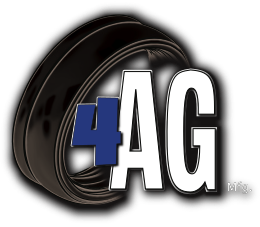What Makes Cultivator Gauge Wheels Essential in Agriculture?
Cultivators play a pivotal role in modern agriculture, offering versatile tools for soil preparation, weed control, and crop cultivation. Among the various types of cultivators, a key component that significantly impacts their performance is the cultivator gauge wheel. This wheel helps maintain consistent depth during cultivation, ensuring optimal soil engagement and minimizing crop damage. Learn about the diverse types of cultivators, their applications, and the critical role of the cultivator gauge wheel in maximizing agricultural productivity.
The Vital Role of Cultivators in Agriculture
Cultivators are essential agricultural implements that offer a myriad of benefits for soil health and crop cultivation. They improve soil aeration, aid in moisture retention by incorporating mulch, and can be equipped with seeding mechanisms for efficient planting. Additionally, cultivators prevent surface evaporation, promote water infiltration, mix soil effectively, control weeds, and facilitate manure application. Their ease of use makes them a valuable tool for farmers.
Cultivator Variations
Various types of cultivators exist, including disc cultivators with plates, rotary cultivators with cutting edges, and prong/tine cultivators equipped with scooped prongs.
Cultivator Gauge Wheel - A Key Component
An important part of many cultivators is the cultivator gauge wheel. This wheel helps maintain consistent depth during cultivation, ensuring optimal soil engagement and minimizing crop damage.
Overall, cultivators, including those equipped with gauge wheels, are indispensable tools for modern farming practices, contributing to increased yields and efficient land management.
Tractor Drawn Cultivators Types
Trailed Type Cultivators
Trailed type cultivators feature a main framework with several cross members to which tines are attached. At the front end, there is a hitch mechanism for connecting to the tractor. The cultivator operates on a pair of wheels, ensuring an even and consistent draft. The hitch height is adjustable to maintain a level frame across various depth settings. The tines are spaced in each row to allow soil and debris to pass freely around them. The tines in subsequent rows are staggered to cover the entire width effectively. Depth adjustment is primarily done by altering the position of the tines in their brackets, with final depth control managed by a screw lever. To prevent damage, it's crucial to lift the tines off the ground before turning at the headland.
Mounted Cultivators
Mounted cultivators are operated by tractors equipped with hydraulic lifts. They feature a rectangular frame made of angle iron mounted on a three-point hydraulic linkage of the tractor. Cross members carry the tines in two staggered rows. Various types of shovels and sweeps are used for effective soil cutting.
Spring-Loaded Tine Cultivators
A spring-loaded tine cultivator includes tines attached to the frame and equipped with springs, allowing the tines to swing back when encountering an obstacle. Each tine has two heavy-duty coil springs, pre-tensioned to minimize movement except when hitting an obstruction. These springs allow the tines to ride over roots or large stones, preventing damage. Once past the obstacle, the tines automatically reset, enabling continuous operation. Made of high carbon steel, the tines are securely aligned on the main frame members. This type of cultivator is ideal for soils with embedded stones or stumps. A high-quality cultivator gauge wheel is provided to control the depth of operation. Depending on the requirements, the cultivator can be fitted with 7, 9, 11, 13, or more tines.
Cultivator with Rigid Tines
Rigid tines are designed to remain stable during fieldwork without deflecting. These tines are bolted between angle brackets and secured to the main bars with sturdy clamps and bolts. These cultivators do not include springs. Adjusting the spacing of the tines involves loosening bolts and sliding the brackets to the position. Spacing adjustments can be made easily without clogging from crop residues or weeds since rigid tines are mounted on both the front and rear tool bars. A cultivator gauge wheel is used to control the working depth.
Revolutionize Your Farming with 4AG's Premium Planter Tires
Tired of inconsistent depth control and uneven tillage? Upgrade your cultivator's performance with 4AG Manufacturing's top-quality planter tires, designed specifically for cultivator gauge wheels. Don't let subpar tires hold you back. Contact us today and experience the difference our planter tires can make in your farming operations.

